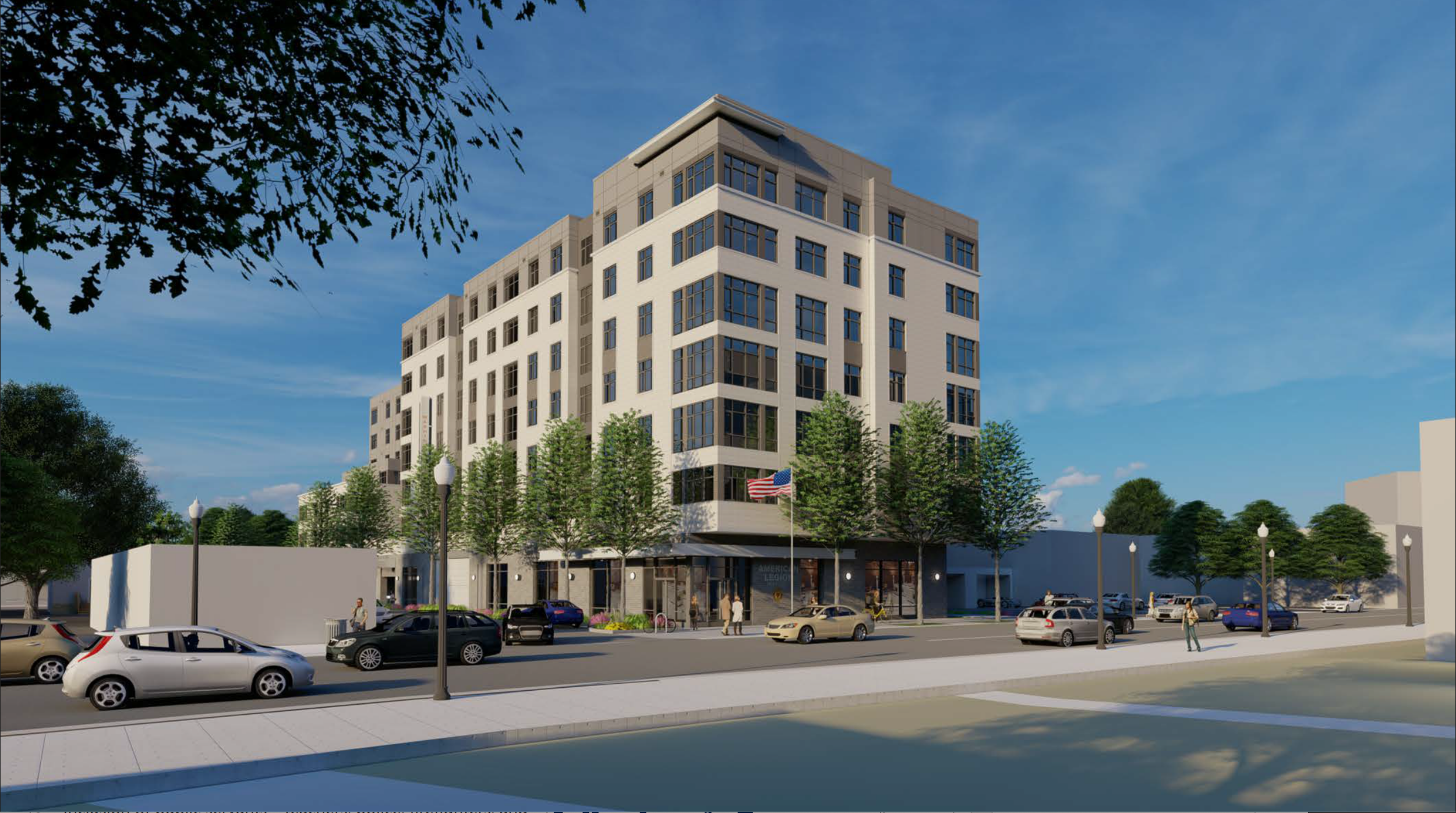On Saturday, February 23, the Arlington County Board approved a redevelopment plan that will bring 160 new affordable units to our community. (Read the County’s press release.)
Plans for the project have been underway since 2016, when Arlington Partnership for Affordable Housing (APAH) was selected to work with American Legion to redevelop the 1.3-acre property at 3445 Washington Blvd.
The seven-story building will replace the aging American Legion Post 139. All the units will be kept affordable for 75 years, and half of them will be reserved for veterans. A-SPAN will collaborate with APAH to work directly with people coming out of homelessness, and the American Legion will have new ground-floor space to continue to carry out its mission to support local veterans.
Prior to the County’s meeting, the Alliance for Housing Solutions’ board of directors submitted a letter in support of the plan, which includes a $5.79 million loan from the County’s Affordable Housing Investment Fund to help build the project.
Three of the reasons for support are listed below. Read the full letter for further details about why AHS believes this development will benefit Arlington for years to come.
1. This project is the product of a great partnership between three nonprofits and good use of “community serving” real estate.
APAH and A-SPAN are award-winning nonprofits with a strong commitment to Arlington. In fact, AHS awarded these two organizations the Ellen M. Bozman Award in 2017 for their collaboration on affordable housing in the Westover neighborhood.
The American Legion Post will be able to reinvigorate the services it provides to its members through this partnership as well. Leveraging an existing nonprofit-owned property such as the American Legion to create new affordable housing is an approach that should be encouraged throughout the County.
2. The project recognizes and seeks to address the affordable housing needs of veterans, in addition to the well-documented broader need for affordable housing in Arlington.
Nearly a third of the 236,000 veterans in the DC metro area are housing cost burdened, paying well over 30% of their income for rent. A third of veterans have a service-related disability. Veterans in our region are younger and often struggle to successfully transition to civilian life despite the significant opportunities our region provides.
The project will provide an affordable home for veterans who have recently left the service and whose jobs pay modest salaries that make it difficult to afford market-rate housing in the community. Even active duty enlisted personnel could potentially qualify to live here. And while Arlington and many other communities have made great strides in addressing veteran’s homelessness, the need for ongoing housing and services for this population is great.
3. The site is an ideal location for new affordable housing in the County.
The American Legion site is extremely well located and within walking distance to Metro, bus routes, shopping, employment, schools, parks, and other community assets. There are few affordable housing developments of any kind in the immediate vicinity of the American Legion site.
The census tract where the site is located has a family poverty rate of 1.22 percent, far below Arlington’s overall 5.34 percent rate.
4. The project fits very well within the principles outlined in the 2017 Special GLUP study.
This project’s design will help the area fulfill such guiding principles as helping the area evolve from an auto-oriented strip to a more pedestrian friendly, walkable, mixed-use environment that makes efficient use of space and ensuring a mix of affordable and market rate housing in the area.
5. The proposed parking for the project is appropriate for both the location and for affordable housing.
Reasonable parking ratios matter for several reasons—one is the exceedingly high cost of underground parking, which can exceed $40-60,000 per space. Avoiding these costs can help keep costs low and makes better use of limited financial resources for an affordable housing project. Low-income residents who are able to live near high-quality transit in walkable areas such as this are able to avoid the substantial cost of car ownership and spend more of their own limited resources on other things such as education, child care, and health care.
For additional reporting on this partnership, check out Alex Koma’s article on ARLnow or D. Taylor Reich’s article on GGWash.


